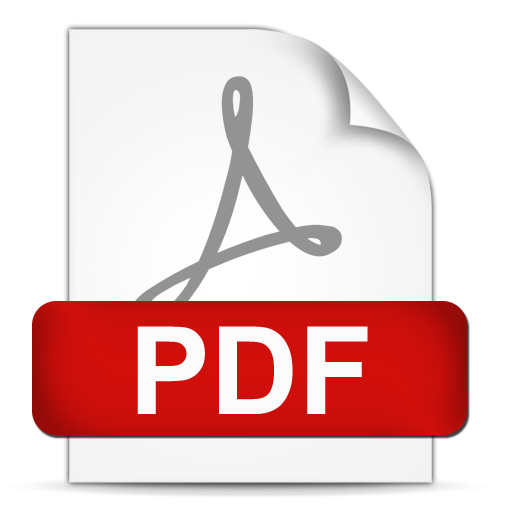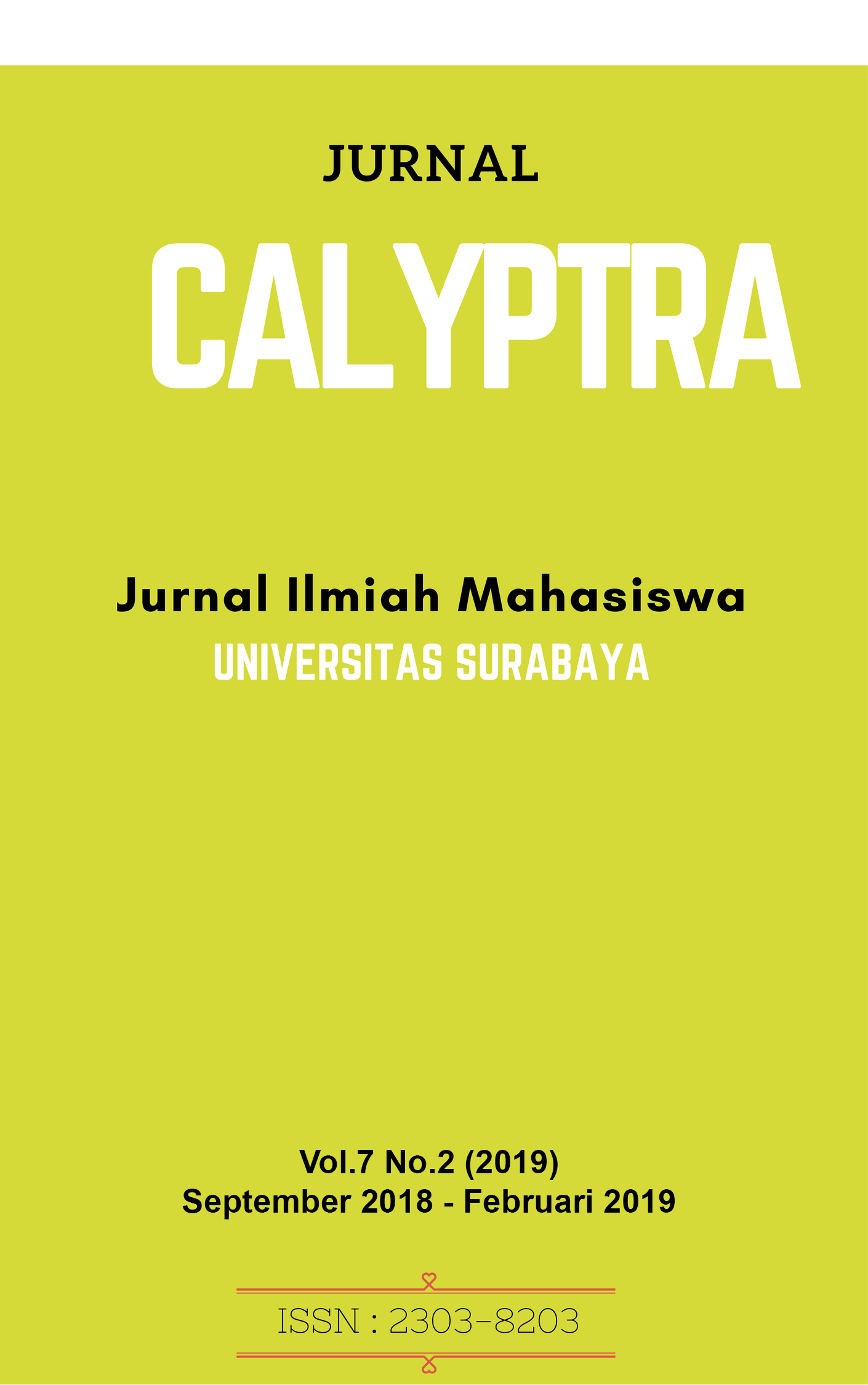HUBUNGAN PENGETAHUAN DAN PERILAKU DALAM MEMPEROLEH ANTIBIOTIK SECARA PER ORAL DI BEBERAPA APOTEK DI SURABAYA
 Abstract Views:
550 times
Abstract Views:
550 times
 PDF - FULL TEXT Downloads:
1456 times
PDF - FULL TEXT Downloads:
1456 times
Abstract
Abstract – According to Yusuf Sholihan (2015) in Surakarta city as much as 64,86% of respondents had bought antibiotics without prescriptions respondents with poor knowledge of antibiotics were 36,96%. Antibiotic resistance is currently the greatest threat to global public health. This study aimed to analyze the correlation between knowledge and behavior of the respondents in seeking antibiotics at several pharmacies Surabaya. This was a cross sectional research using questionnaire to analyze respondents knowledge of antibiotics and checklistto analyze antibiotics seeking behavior. The results of this study indicated most of the respondents were at good level of knowledge ( 42.31%); while respondents with poor level of knowledge were 21.15%. All the respondents received the prescribed antibiotics, indicating that the antibiotic seeking behavior were correct, the correlation analysis between level of knowledge and antibiotics seeking behaviour using spss could not be performed, because there was no variation in behavior. Based on the percentage of the highest level of knowledge, it had been concluded that there was correlation between the level of knowledge with antibiotics seeking behavior.
Downloads
References
Abdulah, R. 2012. Antibiotic Abuse in Developing Countries. Pharmaceutical Regulatory Affairs, 1-2.
Anonim. Peraturan Pemerintah Republik Indonesia Nomor 51 Tahun 2009 Tentang Pekerjaan Kefarmasian. Jakarta: Pemerintah RI ; 2009
Azwar, S., 2011. Sikap dan Perilaku. Dalam: Sikap Manusia Teori dan Pengukurannya. 2nd ed. Yogyakarta: Pustaka Pelajar, 3-22.
Budiman, dan Riyanto Agus. 2013. Pengetahuan dan Sikap Dalam Penelitian Kesehatan. Jakarta: Salemba Medika.
Beukes, C.C. 2011. A Study on the Relationship Between Between Improved Patient and Compliance with Antibiotic Use. South African Society of Clinical Pharmacy.
Conner, M., & Norman, P. (2005). Predicting Health Behavior (2nd ed). London: Open University Press.
Deurink DO, Lestari ES, Hadi U, et al. 2007. Determinantys carriage of resistant Echerichia coli in the Indonesian population inside and outside hospitals. Journal of Antimicrobial Chemotheraphy. Vol. 66. p. 377-384.
Depkes RI, 2009, Peraturan Pemerintah No. 51 Tahun 2009 Tentang Pekerjaan Kefarmasian, Departemen Kesehatan RI: Jakarta.
Direktorat Bina Farmasi Komunitas dan Ditjen Bina Kefarmasian dan Alat Kesehatan Departemen Kesehatan RI, 2008, Petunjuk Teknis Pelaksanaan Standart Pelayanan Kefarmasian di Apotek (SK nomor 1027/menkes/sk/iv/2004).
Djuang, M. H. 2009. Hubungan Antara Karakteristik Masyarakat dengan Penggunaan Antibiotik yang Diperoleh secara Bebas di Kota Medan. Available from: http://repository.usu.ac.id
Hadi, U. 2009, Resistensi Antibiotik, Buku Ajar Ilmu Penyakit Dalam, Edisi V, Jilid III, Interna Publishing, Jakarta.
Hidayat, A.A.A (2010). Metode Penelitian Kesehatan: Paradigma Kuantitatif.Surabaya: Health books publishing
Janz, N. K., & Becker, M. H. (1984). The Health Belief Model: a decade later.Sophe, 1-47.
Janz, N.K., & Becker, M. H. (1984). The Health Belief Model: A Dekade Later.Health Education Quartely, Vol 11 (1), 1-47
Kartajaya, H., Taufik., Mussry, J., Setiawan, I., Asmara, B., Winasis, N.T., et al., 2011, Self medication, Who Benefits and Who Is At Loss, Markplus Insight, Indonesia
Kementerian Kesehatan RI, 2014. Peraturan Menteri Kesehatan Republik Indonesia Nomor 35 Tahun 2014 tentang Standart Pelayanan Kefarmasian di Apotek, Jakarta.
Kementerian Kesehatan RI, 2016. Pasien Cerdas, Bijak Gunakan Antibiotik. KR 20, http://www.edassess.net/eacs/kr20.aspx
Notoatmodjo, Soekidjo. 2003. Pengantar Pendidikan Kesehatan Dan Ilmu Perilaku Kesehatan. Edisi I, Andi Offset, Yogjakarta
Notoatmodjo Soekidjo, 2007, Pendidikian dan Perilaku Kesehatan, Jakarta: Rineka Cipta.
Notoatmodjo Soekidjo, 2007, Promosi Kesehatan dan Ilmu Perilaku, Jakarta: Rineka Cipta.
Notoatmodjo, Sukidjo. 2010. Ilmu Perilaku Kesehatan. Jakarta: PT. Rhineka Cipta
Notoatmojo S. Kesehatan Masyarakat Ilmu dan Seni. Jakarta: Rineka Cipta; 2011.
Notoatmodjo S. 2012. Promosi Kesehatan dan Perilaku Kesehatan. Jakarta: PT Rineka Cipta.
Notoatmodjo, S., 2014. Ilmu Perilaku Kesehatan. Jakarta: PT. Rineka Cipta, Peraturan Menteri Kesehatan Republik Indonesia, 2011, Nomor
2406/MENKES/PER/XII/2011 Tentang Pedoman Umum Penggunaan Antibiotika.
Peraturan Menteri Kesehatan RI, 2017, Nomor 2 Tahun 2017 Tentang Perubahan Penggolongan Narkotika.
Peraturan Menteri Kesehatan RI, 2014, Nomor 35 Tahun 2014 Tentang Standart Pelayanan Kefarmasian Di Apotek.
Peraturan Menteri Kesehatan RI, 2017, Nomor 3 Tahun 2017 Tentang Perubahan Penggolongan Psikotropika.
Peraturan Menteri Kesehatan RI, 2017, Nomor 9 Tahun 2017 Tentang Apotek.
Pulungan, S., 2010, Hubungan Tingkat Pengetahuan tentang Antibiotika dan Penggunaannya di Kalangan Mahasiswa Non Medis Universitas Sumatera Utara, Skripsi, Fakultas Kedokteran, Universitas Sumatera Utara
Riskesdas. 2013. Laporan Nasional 2013. Badan Peneliti dan Pengembangan Kesehatan. Departemen Kesehatan RI.
Rogers. 1974. Penelitian Tentang Perubahan Perilaku Masyarakat, dalam jurnal penelitian Corina Nur Syeima: Gambaran Pengetahuan dan Karakteristik Masyarakat RW 08 Kelurahan Pisangan Barat Ciputat Tentang Pengobatan Sendiri Terhadap Nyeri Menggunakan Obat Antinyeri. http://perpus.fkik.uinjkt.ac.id/file_digital/Skripsi%20%20Corin.pdf, (diakses tanggal 13 Maret 2014).
Rosenstock I., 1974, Historical origins of the health belief model, Health Education Monographs, 2 (4): 328–335.
Sadikin Z.D., 2011. Penggunaan Obat yang Rasional. J Indon Med Assoc. 61:145- 7.
Sarwono. 2012. Psikologi Remaja. Jakarta: PT. Raja Grafindo Persada.
Sekretariat Negara 2014, Undang – Undang Nomor Republik Indonesia 36 Tahun 2014“Tenaga Kesehatan, Jakarta: Pemerintah. 2014
Shehadeh, M., Suaifan, G., Darwish, R. M., Wazaify, M., Zaru, L., & Alja’fari, S. (2012). Knowledge, attitudes and behavior regarding antibiotics use and misuse among adults in the community of Jordan.A pilot study. Saudi Pharmaceutical Journal, 20(2), 125–133. http://doi.org/10.1016/j.jsps.2011.11.005.
Sholihan, Y. (2015). Tingkat Pengetahuan Tentang Antibiotik Pada Pengunjung Apotek Di Kecamatan Jebres Kota Surakarta.
Singarimbun, Masri dan Sofian Effendi. 1989. Metode Penelitian Survey. LP3ES. Jakarta.
Stretcher, V., Rosenstock I. M., 1997, The Health Belief Model. In: Glanz K., Lewis F. M., Rimer B. K., 1997, Health Behavior and Health Education: Theory, Research and Practice, Jossey-Bass. Reprinted with permission, San Francisco.
Sugiyono. 2007. Metode Penelitian Kuantitatif Kualitatif dan R&D. Bandung: Alfabeta.
Sugiyono, 2013.Metode Penelitian Kuantitatif, Kualitatif, dan R&D. Bandung: Alfabeta
Suaifan GA, Shehadeh M, Darwish DA, Al-Ijel H, Yousef AM, et al. (2012) A cross-sectional study on Knowledge, attitude and behavior ralated to antibiotic use and resistance among medical and non-medical university students in Jordan. Afr J Pharm Pharmaco 6: 763-770.
Sunyoto, D 2012. Manajemen Sumber Daya Manusia. Jakarta: PT Buku Seru. http://repository.upi.edu/17628/4/S_MBS_1001311_Bibliography
Tortora, GJ., Funke, BR., Case, CL, 2010, Microbiology an introduction, 10th ed, United State of america, Pearson Education, Inc: 592.
Undang-Undang Republik Indonesia Nomor 36 Tahun 2009 tentang Kesehatan.Diakses dari http://www.jkn.kemkes.go.id
Undang-Undang Republik Indonesia Nomor 36 Tahun 2014 tentang Tenaga Kesehatan
Undang-Undang Obat Keras St. No. 419 tgl 22 Desember 1949.Direktorat Jenderal Pelayanan Kefarmasian dan Alat Kesehatan. Jakarta.
Utami EK. 2012. Antibiotika, Resistensi, dan Rasionalitas Terapi. Vol. 1 No. 1. UIN Maliki Malang. Diakses April – September 2012.
Wawan A dan Dewi M 2010, Buku Panduan Teori Dan Pengukuran Pengetahuan, Sikap, Dan Perilaku Manusia
World Health Organization. (2015). Antibiotic resistance: Multi-country public awareness survey, 1–4. Retrieved from http://www.who.int/drugresistance/documents/baselinesurveynov2015/en/
- Articles published in CALYPTRA are licensed under a Creative Commons Attribution-ShareAlike 4.0 International license. You are free to copy, transform, or redistribute articles for any lawful purpose in any medium, provided you give appropriate credit to the original author(s) and the journal, link to the license, indicate if changes were made, and redistribute any derivative work under the same license.
- Copyright on articles is retained by the respective author(s), without restrictions. A non-exclusive license is granted to CALYPTRA to publish the article and identify itself as its original publisher, along with the commercial right to include the article in a hardcopy issue for sale to libraries and individuals.
- By publishing in CALYPTRA, authors grant any third party the right to use their article to the extent provided by the Creative Commons Attribution-ShareAlike 4.0 International license.



